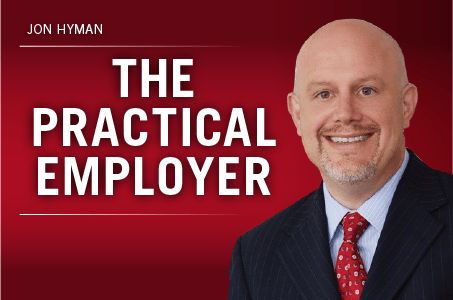A few months ago I wrote about an employee fired for taking a fishing trip while out on an FMLA leave. In that case, the court upheld the termination as lawful. Recently, however, the Supreme Court of Massachusetts considered a similar case and reached the opposite result.
Richard DaPrato, an IT manager for the Massachusetts Water Resource Authority, took an approved FMLA leave of absence to have a tumor removed from his right foot. During the last few weeks of his leave, DaPrato took a previously scheduled vacation to Mexico with his family, a trip he took every year. According to DaPrato, he limited his activities during his trip based on the limitations imposed by his foot surgery.
When the employer learned of DaPrato’s Mexican vacation, its HR director launched an immediate investigation, which included obtaining video of DePrato lifting luggage out of a car at the airport. DaPrato maintained that he did nothing that was inconsistent with the limitations set forth in his FMLA medical certifications. Nevertheless, the company fired him for misrepresenting his disability.
Also read: Does the FMLA Protect Organ Donation Surgery as a ‘Serious Health Condition?’
We clarify today that an employer may validly consider an employee’s conduct on vacation — or, for that matter, anywhere — that is inconsistent with his or her claimed reasons for medical leave, when the employer has such information at the time the employer is evaluating whether leave has been properly or improperly used.
Here, DaPrato took FMLA leave to allow his foot to recover fully from surgery. Such recovery could take place in a warm climate as well as in a New England winter. That being said, vacationing while on FMLA leave may take either permissible or impermissible forms. An employee recovering from a leg injury may sit with his or her leg raised by the sea shore while fully complying with FMLA leave requirements but may not climb Machu Picchu without abusing the FMLA process. Careful consideration of the reasons for the medical leave and the activities undertaken, including the timeline for rehabilitation and recovery, are required to determine whether FMLA leave has been abused.
What can employers learn from this case? Don’t make a knee-jerk decision to fire an employee who does something recreational during his or her FMLA leave. Gather the facts and make a reasoned decision over whether the activity is, or is not, consistent with the medical reason(s) for the leave. Fishing while recovered from hernia surgery might be a tough sell for the employee. Convalescing on the beach while recovering from foot surgery, however, might be a different story. Without all of the information and facts coupled with a careful deliberation of their consistence or inconsistency with the FMLA leave, however, you might have a difficult (and costly) time justifying a decision if challenged in court.
Also read: Which Mental Health Service Does the FMLA Not Cover?

